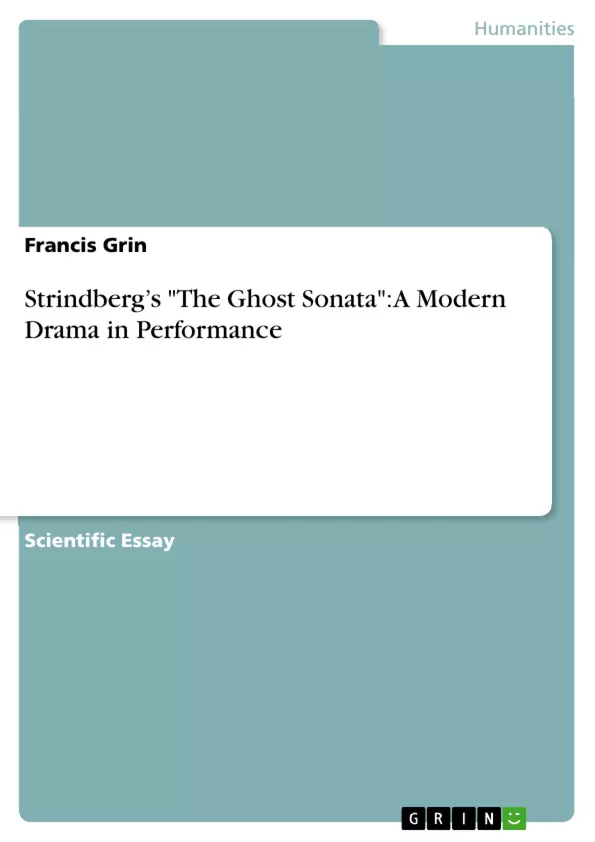August Strindberg’s The Ghost Sonata does not suggest a realistic portrait of life, rather, like a dream, this play offers a subjective experience of the world. It is a highly modern text as it blurs the realms of real and illusion to expose the world in all its
scary ambivalence, questioning the old doctrine and the notion of ‘one great truth’. In this way, The Ghost Sonata requires a dramaturgy which rejects realist styles of theatre and adopts an expressionist form. The Ghost Sonata’s world premiere, loosely
directed by August Falck, was staged at Strindberg’s Intima Teatern in Stockholm (1908). Although the premiere did not exactly stun its audiences, it had planted the seeds for an expressionist dramaturgy which would later fully blossom and resonate in the set design, characterization, and overall rhythm used in subsequent productions.
For example, Ingmar Bergman’s 2001 staging of the play in New York (done by Royal Dramatic Theatre of Sweden and presented by the Brooklyn Academy of Music at The Harvey Lichtenstein Theatre) is an example of how The Ghost Sonata was milked for its theatrical potential, conveying how this play’s dramaturgical journal has cleared the stage for something extraordinary.
Inhaltsverzeichnis (Table of Contents)
- Introduction
- The Ghost Sonata's World Premiere at Intima Teatern
- Intima Teatern's Expressionist Staging
- Set Design
- Characterization
- Ingmar Bergman's 2001 Production
- Set Design and Audience Interaction
- Characterization and Juxtaposition
- Musicality and Rhythm
Zielsetzung und Themenschwerpunkte (Objectives and Key Themes)
This text analyzes the staging history of August Strindberg's The Ghost Sonata, focusing on the expressionist approaches employed in its early productions and their development in later interpretations, particularly Ingmar Bergman's 2001 production. The analysis compares and contrasts the original Intima Teatern production with Bergman's vision, highlighting key choices in set design, characterization, and overall dramatic rhythm.
- The evolution of expressionist techniques in theatrical productions of The Ghost Sonata.
- A comparative analysis of the Intima Teatern premiere and Ingmar Bergman's 2001 production.
- The impact of set design on the audience experience and interpretation of the play.
- The use of characterization to convey inner states and blur the lines between reality and illusion.
- The role of rhythm, music, and silence in enhancing the dramatic impact.
Zusammenfassung der Kapitel (Chapter Summaries)
The introduction sets the stage by describing The Ghost Sonata as a highly modern text that challenges traditional notions of realism and truth. It introduces the concept of expressionist dramaturgy as a suitable approach for this play. The following section details the world premiere at Intima Teatern in 1908, highlighting its pioneering use of minimalist set design, on-stage signs, and a close actor-audience relationship. The subsequent section dives into Ingmar Bergman's 2001 production, analyzing how he preserved and developed these initial expressionist concepts for a contemporary audience, specifically focusing on his unique use of the stage space, alterations to the script's original use of signs, and his ending choice. A further section examines Intima's expressionist characterizations and compares them to Bergman's more balanced approach.
Schlüsselwörter (Keywords)
August Strindberg, The Ghost Sonata, expressionist theatre, Intima Teatern, Ingmar Bergman, set design, characterization, minimalist staging, audience interaction, dramatic rhythm, reality vs. illusion.
- Quote paper
- Francis Grin (Author), 2008, Strindberg’s "The Ghost Sonata": A Modern Drama in Performance, Munich, GRIN Verlag, https://www.grin.com/document/119985



